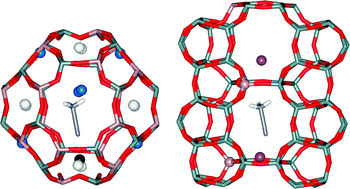Interaction of acetonitrile with Na-zeolites: adsorption modes and vibrational dynamics in the zeolite channels and cavities
Abstract
The interaction of

* Corresponding authors
a
Center for Biomolecules and Complex Molecular Systems, Institute of Organic Chemistry and Biochemistry, Academy of Sciences of the Czech Republic, Flemingovo nám. 2, Prague 6, Czech Republic
E-mail:
petr.nachtigall@uochb.cas.cz
Fax: +420-220410320
Tel: +420-220410324
The interaction of

 Please wait while we load your content...
Something went wrong. Try again?
Please wait while we load your content...
Something went wrong. Try again?
D. Nachtigallová, L. Vrbka, O. Bludský and P. Nachtigall, Phys. Chem. Chem. Phys., 2008, 10, 4189 DOI: 10.1039/B803024C
To request permission to reproduce material from this article, please go to the Copyright Clearance Center request page.
If you are an author contributing to an RSC publication, you do not need to request permission provided correct acknowledgement is given.
If you are the author of this article, you do not need to request permission to reproduce figures and diagrams provided correct acknowledgement is given. If you want to reproduce the whole article in a third-party publication (excluding your thesis/dissertation for which permission is not required) please go to the Copyright Clearance Center request page.
Read more about how to correctly acknowledge RSC content.
 Fetching data from CrossRef.
Fetching data from CrossRef.
This may take some time to load.
Loading related content
